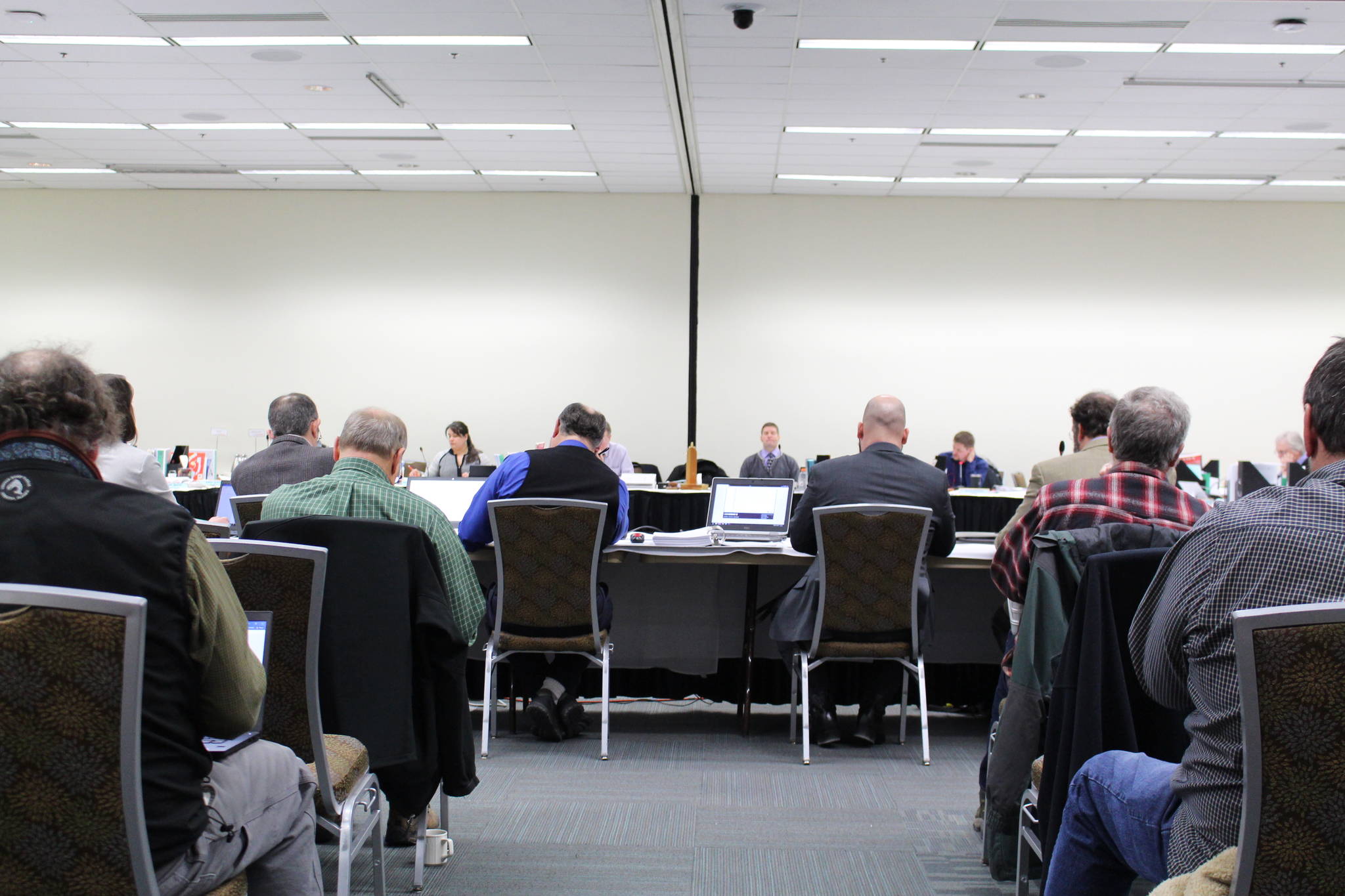Alaska’s Board of Fisheries voted on Tuesday to delist the sockeye salmon stock in the Susitna River as a “Stock of Yield Concern” in response to reports of increased harvest yields from the Alaska Department of Fish and Game.
The Board is in Anchorage until Feb. 19 to discuss proposed changes to regulations for Upper Cook Inlet Finfish fisheries. One topic discussed was the status of the sockeye salmon stock in the Susitna River, located in the northern part of Cook Inlet.
The stock was designated as a Stock of Yield Concern by the Board in 2008 after missing its sustainable escapement goal for five years in a row, according to a February 2020 report from ADF&G.
A stock is designated as one of Yield Concern when it shows a “continuing or anticipated inability to meet expected yields over a 4 to 5 year period,” according to the Policy for the Management of Sustainable Salmon Fisheries.
As a result of this designation, certain management and regulatory actions were taken to address the diminished returns of the river, including reducing the number of set gill nets allowed per permit in the Northern District during certain times of the year and closing the Larson Creek area to sport fishing in 2014, 2015, 2016 and 2019.
During the Board’s meetings in Anchorage this week, the Department of Fish and Game recommended that the Stock of Yield Concern designation be discontinued for several reasons: The escapement goals for Susitna sockeye salmon were “generally being met,” the harvest yield in the Northern District Set Net fishery had increased since the low numbers reported in 2005 and 2006, the harvest yield of Susitna River sockeye had increased or remained stable since the stock’s designation, and the regulatory changes implemented during the designation are now included in existing management plans for the area.
Pat Shields, regional management coordinator for the Division of Commercial Fisheries and a representative for ADF&G, said the department looked at the stock closely for several years before making this recommendation, and added that the decision was contingent on keeping the tighter regulations that had been implemented in existing management plans.
Although the Board voted to remove this designation from the Susitna river stock, several board members expressed their reservations about doing so. Board member John Jensen said that he was initially against removing the designation but was swayed after seeing the Department of Fish and Game’s presentation and being assured that current regulatory measures would remain in place.
“I was on the fence, like Mr. Wood, about this one,” Jensen said. “I believe it probably is time to take the Yield Concern off, but I like the department’s idea of keeping the action plan active so they have the tools to manage it.”
Marit Carlson-Van Dort, vice chair of the Board, also said her decision to vote in favor of removing the designation was primarily because the current action plan would remain in place.
“I think for me it really underscores how carefully the department consider the allocation of departmental resources to make sure that we have a robust data set around this particular stock,” Carlson-Van Dort said. “Because I think it’s only going to become more and more important, particularly if you see improvement on return.”
The motion to remove the Susitna River sockeye salmon stock as a Stock of Yield Concern passed the Board unanimously.
During Tuesday’s deliberations the Board also voted to increase the in-river goal ranges for late-run sockeye salmon in the Kenai River. The proposal for the increase came from the Kenai River Sportfishing Association and received pushback from some stakeholders, who believed that this decision would negatively impact commercial fishery harvests and potentially lead to over-escapement in the river. The proposal was adopted by a vote of 6 to 1.
A list of proposals and other documents referenced during the meetings can be found at the Board of Fisheries website.


